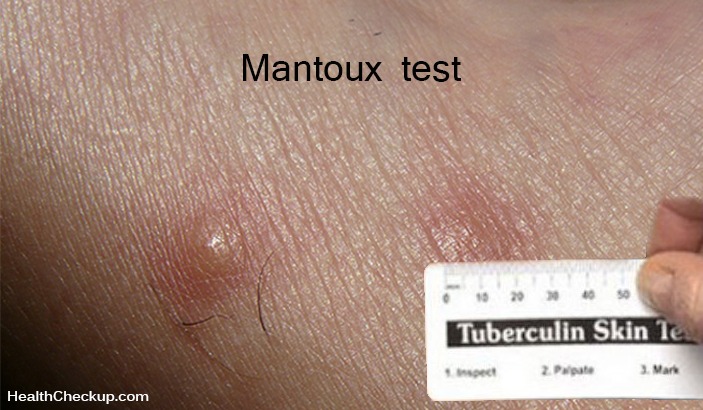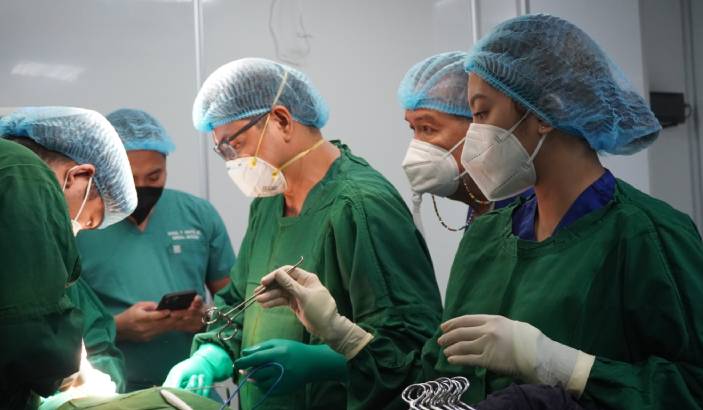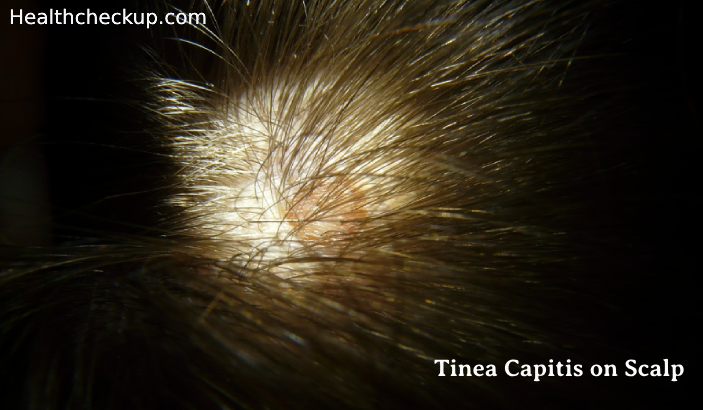Mantoux test, also known as Tuberculin Skin Test and PPD (Purified Protein Derivative) test is a simple and harmless method to find out whether an individual has been exposed to tuberculosis bacterium or if he has a latent TB infection. The mantoux test gives effective results if someone currently has TB, if he was exposed to TB bacterium in the past or if he has received the BCG vaccine against TB.
Reasons To Do the Mantoux Test
The Tuberculin Skin Test or Mantoux test is done to identify TB infection in
- People who have stayed in close contact with a person known to have tuberculosis
- Health care workers who are likely to be exposed to TB bacterium
- People with symptoms of TB – Persistent Cough, Night Sweats, Unexplained Weight Loss
- People with abnormal chest X-ray
- People who have undergone organ transplant
- People with an impaired immune system or those suffering from HIV
How Does The Mantoux Test Work?
The TB skin test is based on the logic that the infection with M. tuberculosis bacterium results in a delayed-type hypersensitivity skin reaction to some components of the bacterium. These components of the bacterium are extracted from TB culture are these are the main elements of the tuberculin purified protein derivative (PPD).
This PPD material is administered to the skin for testing tuberculosis infection. The raised area on the skin site where the PPD was injected indicates the immune cells or T-cells have reacted and attracted by the immune system to the site where the tuberculin protein derivative was released. The immune cells release lymphokines at this site which causes hardening of the injection site due to local vasodilatation.
How To Perform The Mantoux Test?
The Mantoux test is performed by injecting 0.1 mL of a liquid that contains 5 TU (tuberculin units) of PPD to the top layer of the skin of the forearm. The skin area should be free of any abnormalities and away from the veins. The injection consists of a 27-guage needle and a tuberculin syringe. Once the tuberculin PPD is injected, a pale elevation of the skin 6mm to 10 mm in diameter should be formed.
Mantoux Test Results And Interpretation
The results of the Mantoux test depend on the presence of absence of a raised, thickened local area of skin reaction, which is referred to as an induration. The skin test should be read 48 to 72 hours after the injection is administered. At this time, the size of the induration is maximal. Test readings post 72 hours are not considered accurate because the size of the induration begins to decrease.
A tuberculin reaction test is classified as positive depending on the diameter of the induration in combination with some patient-specific risk factors.
In a normal, healthy individual with the properly functioning immune system, an induration greater than or equal to 15 mm is considered a positive skin test. Presence of blisters also indicates a positive result.
An area of induration of 10 mm is considered positive for people who are
- Recent immigrants from high-prevalence areas
- Residents and employees in high-risk areas
- IV drug abusers
- Children under the age of 4 years
- Working with mycobacteria in labs
- Unhealthy children exposed to high-risk adults
An area of induration of 5 mm is considered positive for following people
- Who have weakened or suppressed the immune system
- Who have HIV infection
- Who have had recent contact with people with TB infection
- Who have undergone organ transplant
The test result is considered negative when there is no skin reaction to the injection. But a negative test does not always mean that a person is free of tuberculosis bacterium.
People with TB infection may have a false negative test result if their immune function is compromised by AIDS, chemotherapy or any chronic medical condition.
10 to 25% of people with newly diagnosed tuberculosis of the lung have false negative results due to poor immune function, poor nutrition, steroid therapy or any viral infection.
Almost 50% of people with disseminated TB also have a false negative test result. People who have received the BCG vaccine in the past may have a false positive test result.
People infected with any other types of mycobacteria other than Mycobacterium tuberculosis can also have false positive skin test result.
Risks Involved in Mantoux test
Mantoux test is a simple and safe procedure that does not produce any adverse side effects.
- Live bacteria is not used for the test, therefore, there is no chance of developing tuberculosis from the test.
- Some of the common reactions to the test include swelling and redness of the arm, particularly in people who have had tuberculosis or have been infected previously.
- Allergic reactions to the mantoux test are rare.
- Tuberculin skin test is safe for pregnant and breast feeding women.
However, a tuberculin skin test should be avoided if a person is known to have TB infection, if a person had a pervious severe reaction to TB antigens or if a person already suffers from a severe skin rash that would make it difficult to read the skin test.
After Test Care of The Site
- Some redness and swelling of the skin at the test site is common.
- The site may itch, but you should resist the temptation to scratch it. Because it may increase the redness and swelling.
- You can put a clean cold washcloth on the site and then dry it in order to pacify the itch.
- A strong positive reaction to the test may result in mild pain.
- Contact your doctor if you experience fever, swelling in the arm, swelling of the lymph nodes in the armpits.
The mantoux test is an important test for determining TB infection, but this test alone cannot confirm an active TB infection. The result of the Mantoux test is considered in conjunction with other tests such as chest X-ray and sputum cytology. You can always consult your doctor about any concerns you have regarding the tuberculin skin test, its procedure, risk factors and results.
Medically Reviewed By









